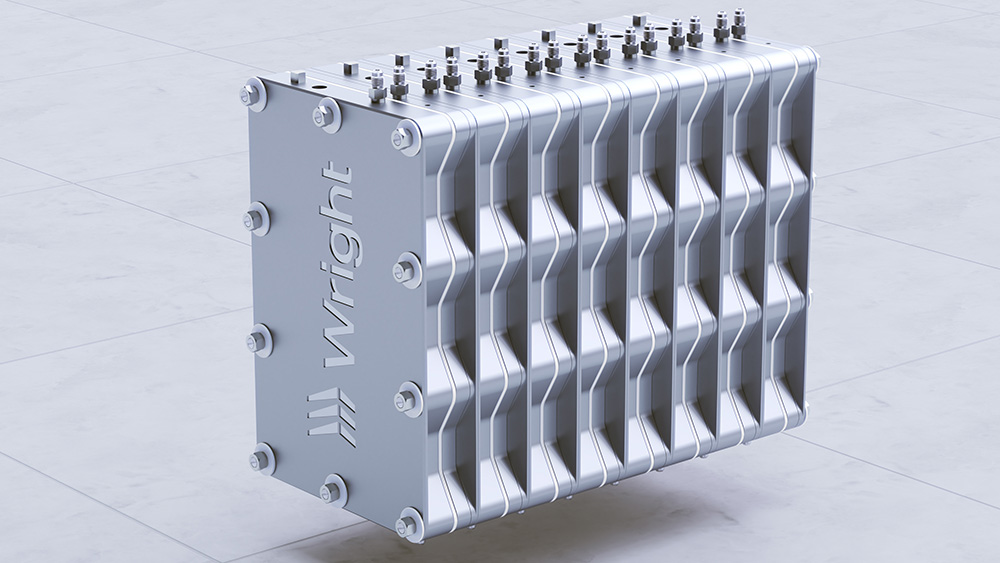Wright Electric, provider of electric propulsion systems for regional aircraft, has launched an initiative to develop batteries targeting 1,000 watt hours per kilogram (Wh/kg) pack-level specific energy.
“When I founded Wright, the best vehicle batteries had [specific energy] below 250 Wh/kg,” said Jeff Engler, CEO of Wright. “Now several large manufacturers are advertising cells at double that capacity, and we have visibility into new battery chemistries that could get us to our target of 1,000 Wh/kg.”
Wright says that 1,000 Wh batteries would enable the electrification of hard-to-decarbonize transportation sectors, for example electric aircraft with 100 passengers. Given that the vast majority of aerospace carbon emissions are in aircraft with 100 or more passengers, these batteries would enable a paradigm shift in decarbonization.
Founded in 2016, Wright’s goal is to decarbonize the aerospace industry. The company works with easyJet, NASA, Y Combinator, DARPA–Energy, and the US Department of Defense.
Wright has built power-dense electric motors, inverters and generators for aerospace and defense applications. The company recently tested its electric motor to 1 megawatt and is planning for altitude testing at the NASA Electric Aircraft Testbed (NEAT). Building on this work, Wright is now applying its expertise in lightweight mechanical and electrical systems to battery development. Since 2021, Wright has been conducting experiments with overlooked battery technologies that could be ideal for applications that require extreme light weight, safety and compactness.
“We have developed experience building lightweight thermally-managed electric propulsion systems, and we see a way to apply that knowledge to the design of large molten battery packs,” says Colin Tschida, Head of Powertrain at Wright. “To cultivate a breakthrough in energy storage, we engaged four chemistry PhDs to act as scouts for promising battery chemistries. This month, we are beginning our second phase of validation experiments with the approaches that showed the most promise.”
Wright says initial packs will be released for laboratory testing in 2025, and hopes to roll out products to aerospace and defense early adopters in 2027.
Source: Wright Electric


















































